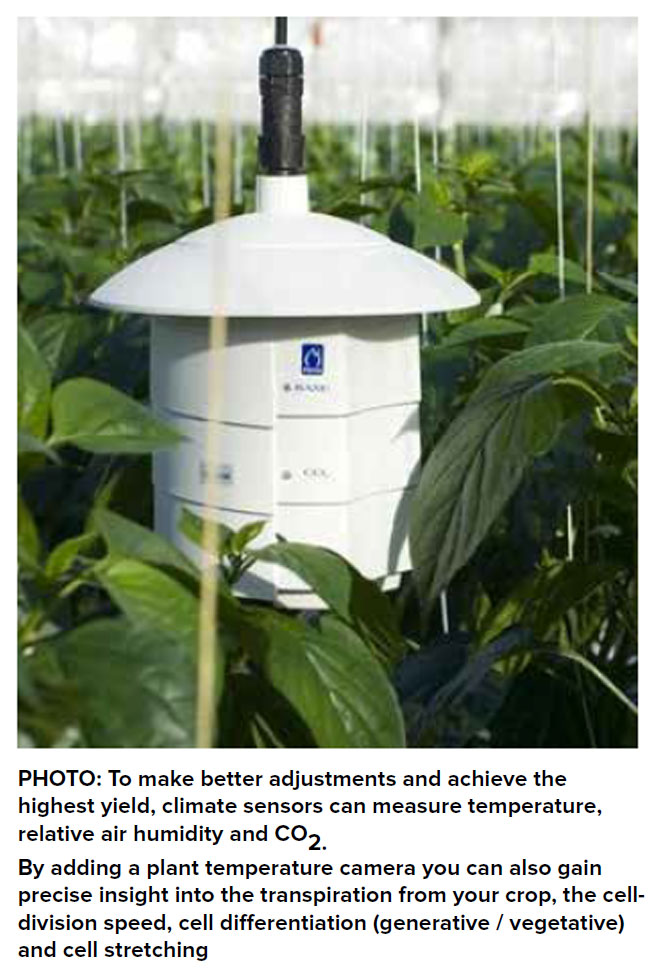 By BRIONY VAN LOON, Powerplants Australia
By BRIONY VAN LOON, Powerplants Australia
The controller uses water measured through a flow meter, the strength in the stock tanks, the capacity of the dosing channels and the desired EC and pH to determine the optimum level of dosing needed to achieve the set targets.
Apart from scheduled irrigation, many controllers these days also use light to automatically trigger irrigation, more often during sunny periods and less often during dull days.
A more recent advance has been the use of scales to measure changes in plant weight to determine transpiration, which automatically influences irrigation scheduling.
Once configured, such automatic systems free up the grower to focus on other aspects of crop management.
These systems are now starting to feature in many properties across Australia.
Other advancements have been in crop and labour registration and management.
Recent systems use cloud-based services which allow managers to register activity both in the field and in the pack house; allowing them to improve staff efficiency and provide staff performance incentives, on the recorded outcomes achieved.
It also allows different crops to be tracked and the incidence of pests and diseases to be recorded.
More information on this technology and case studies that illustrate how it can be successfully used in your business can be obtained from Powerplants Australia.
These advances in crop production will help you to grow top quality tomatoes, berries, flowers and other crops, whilst also saving on time, water, energy, labour and money.
